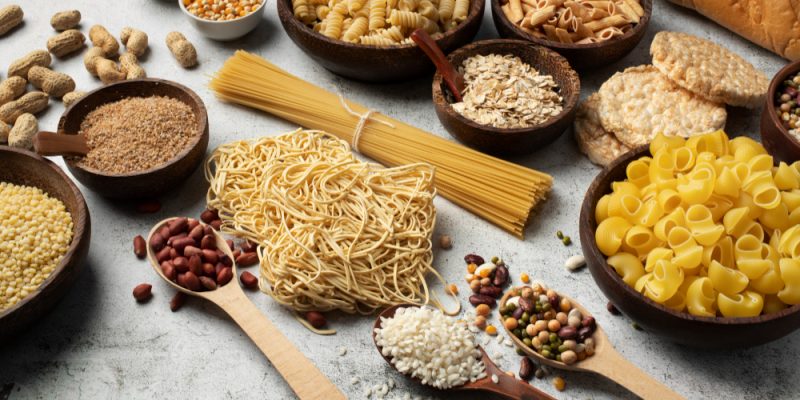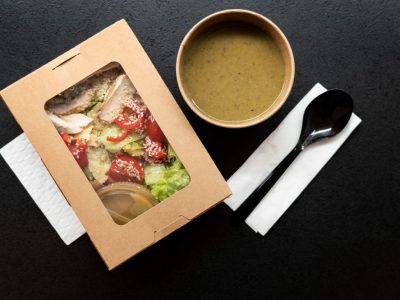Food Allergies and Cross-Contamination
People today are very careful about what they eat, so it is important to know about food allergens and the risks of cross-contamination. Food allergies happen when your immune system reacts to certain proteins in food. They can cause a wide range of symptoms, from minor pain to reactions that could kill you. More and more adults and kids are developing food allergies, so it is important for food businesses, home cooks, and customers to know about the possible risks. Cross-contamination, which is when allergens are accidentally moved from one food to another, is very dangerous for people who have food allergies.
A strong allergic reaction can be caused by very small amounts of an allergen. This means that strict adherence to food safety rules is necessary anywhere food is prepared or given. Failure to take these precautions can have terrible results, including serious health problems and even death. So, making people more aware of allergens and putting in place effective cross-contamination prevention strategies are not only the right thing to do, they are also the law and an ethical duty. It is possible for food to get contaminated in a busy restaurant kitchen, a home where meals are being prepared for delivery through the HOGR app, or a family gathering.
…
Understanding the science behind food allergies and the practical steps needed to prevent cross-contamination is vital for ensuring the safety of everyone who consumes food. This article will delve into the complexities of food allergies, explore the various ways cross-contamination can occur, and provide a comprehensive guide to implementing effective food safety measures.
A Guide to Food Safety and Cross-Contamination Prevention
Creating a safe food environment for individuals with food allergies requires a multifaceted approach that encompasses education, training, and strict adherence to food safety protocols.
Food Allergy Safety
Ensuring food allergy safety involves a comprehensive understanding of allergens, their potential sources, and the steps needed to prevent allergic reactions. Common food allergies include reactions to peanuts, tree nuts, milk, eggs, soy, wheat, fish, and shellfish. It’s important to remember that people can be allergic to any food and that this list is not exhaustive. Clear and accurate labelling of food products is crucial for consumers with food allergies. Restaurants and food vendors must be transparent about the ingredients in their dishes and be prepared to provide detailed information about potential allergens.
Staff training is essential for food allergy safety. All personnel involved in food handling should be educated about the symptoms of allergic reactions, the importance of cross-contamination prevention, and the procedures to follow in case of an emergency. When preparing food for delivery through apps like HOGR, extra care must be taken to ensure that accurate allergen information is included with the meal and that cross-contamination is prevented during preparation and delivery.
Cross-Contamination Prevention
Cross-contamination prevention is the cornerstone of food allergy safety. This involves implementing strict hygiene practices and creating dedicated workspaces to minimise the risk of allergen transfer. Key strategies include:
- Separate Preparation Areas: Designate separate areas for preparing allergen-free meals. Use different cutting boards, utensils, and cookware for foods containing allergens.
- Thorough Cleaning and Sanitization: Clean and sanitise all surfaces and equipment thoroughly after each use, especially when handling allergens.
- Handwashing: Frequent handwashing with soap and water is essential. Staff should also wear gloves when handling food.
- Proper Storage: Store allergen-containing ingredients separately from other foods to prevent accidental contact.
- Careful Labeling: Clearly label all food items and ingredients, especially those containing allergens.
- Avoid Shared Equipment: Avoid using shared equipment like fryers or toasters for both allergen-containing and allergen-free foods.
- Clear Communication: Establish clear communication protocols between kitchen staff, servers, and customers regarding food allergies.
When preparing food for delivery via the HOGR app, it is important to package allergen free meals separately, and to clearly label them.
Allergen Awareness
Raising allergen awareness is crucial for creating a safe and inclusive food environment. This involves educating staff, customers, and the general public about the seriousness of food allergies and the importance of cross-contamination prevention. Restaurants and food vendors should provide clear and accessible information about allergens in their dishes, both on their menus and online. Educational materials and training programs can help to raise allergen awareness and ensure that everyone involved in food handling understands the risks and responsibilities. Promoting a culture of empathy and understanding towards individuals with food allergies is essential for creating a safe and welcoming dining experience.
Food Sensitivity
While food allergies involve an immune system response, food sensitivity or intolerance refers to difficulty digesting certain foods. Symptoms of food sensitivity can include digestive issues, headaches, and skin rashes. While not life-threatening, food sensitivity can significantly impact quality of life. It’s important to distinguish between food allergies and food sensitivity, as they require different management strategies. While cross-contamination is not a concern for food sensitivity, accurate labeling and ingredient information are still important for individuals with these conditions.
Kitchen Safety
Kitchen safety extends beyond food allergy concerns and encompasses all aspects of preventing foodborne illnesses and accidents. This includes proper food handling, storage, and cooking techniques. Maintaining a clean and organized kitchen environment is essential for preventing cross-contamination and other food safety hazards. Regular inspections and audits can help to identify and address potential safety risks. Implementing a robust kitchen safety program is crucial for ensuring the well-being of both staff and customers.
Conclusion
Understanding food allergies and preventing cross-contamination are essential for creating a safe and inclusive food environment. By raising allergen awareness, implementing strict food safety protocols, and fostering a culture of empathy, we can minimize the risks associated with food allergies. Whether it’s a restaurant kitchen, a home preparing meals for delivery via the HOGR app, or a family gathering, everyone involved in food handling has a responsibility to prioritize food allergy safety. By taking proactive steps to prevent cross-contamination and educate ourselves and others about food allergies, we can ensure that everyone can enjoy food safely and without fear.
A food enthusiast and a blogger – someone who likes to eat and write about it. I’m passionate about exploring different cuisines and challenging my palette. I give into my food craving regularly and am often on the hunt to find my new favorite food place in town.
















